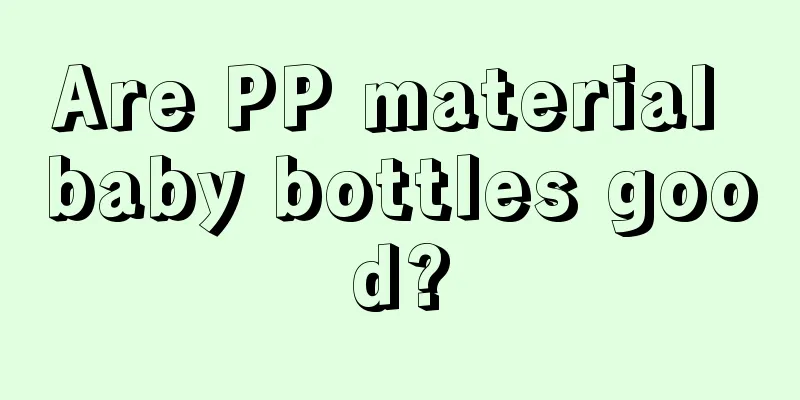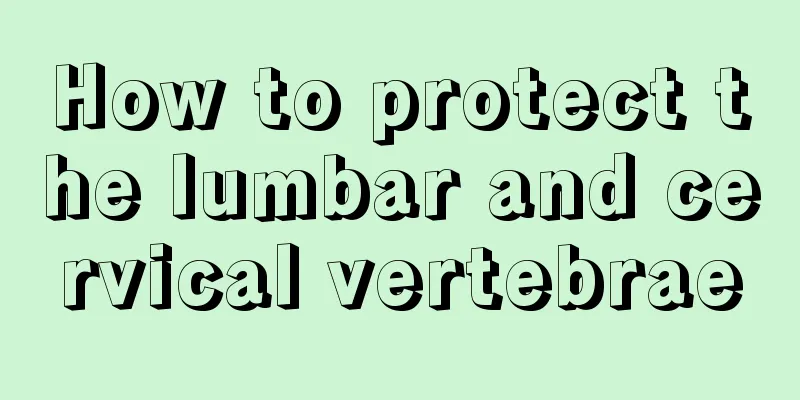Are PP material baby bottles good?

|
For new parents, caring for a baby is one of the most anxious issues. Babies are in a very special period. Their organs are not well developed, and they lack the ability to resist external dangers. They are prone to bacterial infections and related diseases. Therefore, parents need to pay special attention to their baby's food, clothing and daily necessities. Recently, pp milk bottles have been welcomed by many mothers. What are the advantages of this kind of milk bottle? 1. What is a PP baby bottle? Refers to a baby bottle made of PP material. PP baby bottles are often known for their safety, lightness, and drop resistance. Among them, PP is highly praised by mothers because it does not contain bisphenol A, a carcinogen. Therefore, polypropylene (PP) is often used in the manufacture of food containers, baby bottles, etc. 2. How about PP baby bottles PP is a material with the characteristics of high temperature resistance, corrosion resistance, good surface finish and drop resistance. In addition, the material has good thermal stability, which ensures that the PP bottle can maintain its own safety even at a high temperature of 110 degrees Celsius. The most noteworthy thing is the safety of PP baby bottles. Since they do not contain carcinogens, are non-toxic and harmless, and are very cheap and cost-effective, they are worth buying for mothers. Mothers should also pay attention when purchasing: compared with PC bottles, PP bottles are more beautiful, have better hardness and are more wear-resistant. On the other hand, once a PP baby bottle breaks, it must be replaced. 3. Classification of PP baby bottles PP baby bottles have many advantages. First, the translucent bottle body allows mothers to clearly understand how much milk powder is in the bottle when pouring it. Secondly, its good heat resistance ensures that it can withstand high temperatures of 110 degrees Celsius. Thirdly, PP bottles are very easy to rinse, saving mothers a lot of worry. So how are PP baby bottles classified? 1. Classification by function Under this classification, baby bottles can be divided into regular and anti-spit-up types. PP anti-spit-up bottle means that it can effectively prevent or reduce the baby's inhalation of air when sucking milk, thereby effectively preventing the baby from experiencing bloating, burping or spitting up milk after drinking milk. 2. Classification by capacity The simplest way to classify baby bottles is by capacity. The more common classifications are 120 ml, 150 ml, 220 ml, and 240 ml. Generally speaking, mothers can consider buying two bottles, one large and one small, one for the baby to drink milk and one for the baby to drink water. 3. Classification by caliber There are wide-mouth and standard-mouth types. At present, the former is highly praised by mothers because its wider mouth makes it convenient to pour in milk powder and is easy to clean. 4. Classification by configuration Babies are classified by whether they are equipped with a handle and a straw. For babies aged 0 to 6 months, it is recommended that they use PP bottles without handles and straws, while babies over six months old can choose bottles with handles and straws, which they can hold by themselves. In addition, with the help of the automatic straw, the baby can easily suck milk at any angle. 4. How often should PP baby bottles be changed? For mothers, the safety of the baby is the most important thing, and PP bottles are chosen by many mothers because of their high safety. Generally speaking, the safety of baby bottles can be ensured through daily cleaning of the bottles. However, as time goes by, once the shelf life is exceeded, ordinary cleaning can no longer ensure safety, and it needs to be replaced. 5. Any bottle needs to be changed frequently No matter what kind of bottle it is, after a period of use, the bottle needs to be replaced: 1. Due to long-term scrubbing, the surface of the bottle will be oxidized and the scale on the surface of the bottle will be worn out and cannot be seen clearly. 2. Long-term use will also cause a lot of milk stains to accumulate on the inner wall of the bottle, or cause the inner wall to be covered with a layer of fog. To sum up, it is generally recommended to change the bottle every six months. Once there is a crack, it needs to be replaced immediately. In addition, although PP bottles have good resistance to falling, they are not wear-resistant. Therefore, as long as cracks appear in the PP bottles, mothers must change the bottles for their babies for safety reasons. |
<<: How to maintain the relationship between husband and wife
Recommend
Ways for women to prevent cervical cancer: Can regular cervical cancer screening really prevent cervical cancer?
There may be no discomfort in the early stage of ...
Radiation therapy for laryngeal cancer
Radiotherapy is one of the important means of tre...
Where to start with lung cancer prevention? Three things to know about lung cancer prevention
In recent years, the incidence of lung cancer in ...
What are the benefits of eating purple grapes
Grapes are a relatively ancient food and have man...
Methods to prevent and deal with lumbar muscle strain
I believe everyone has heard of the disease of lu...
What to do if there are red bloodshot on both sides of the nose
There are many parts of our facial skin that are ...
Pay attention to the importance of diet for colorectal cancer
Cold weather makes people's appetites grow, b...
What medicine is effective for viral cold and fever
Viral colds are relatively common in clinical pra...
What are the benefits of washing your hair with salt water?
I believe everyone wants to have black hair, but ...
Can you still drink expired honey?
Many people believe that honey is the only food t...
Is vitamin e skin cream effective?
The hot summer is here, and the sun is more inten...
Does the transformer radiate to the human body?
In rural areas, many transformers are directly ex...
Why is the inner thigh itchy?
Summer is the season when skin diseases are preva...
What to do if ankle ligament is sprained? Emergency care method turns out to be like this
Ankle ligament sprain is a common condition in da...
How to properly match diet in late stage of intestinal cancer
Patients with advanced intestinal cancer must pay...









